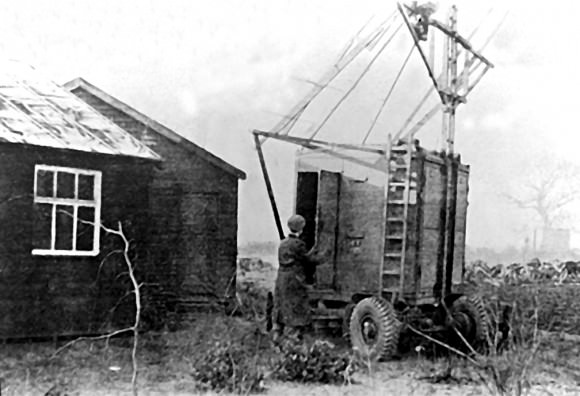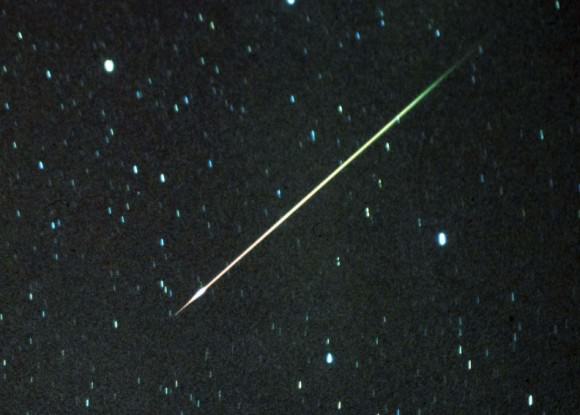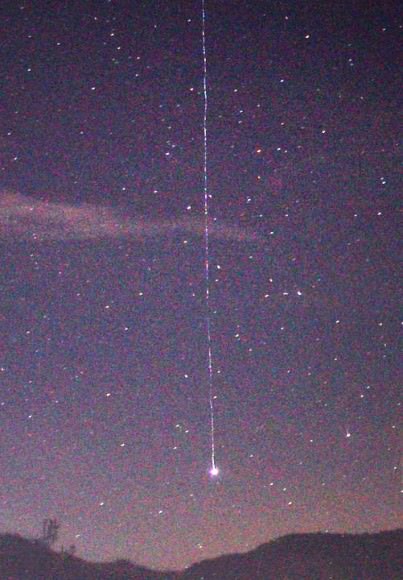I’ve never seen an Arietid meteor and chances are you haven’t either. Peaking on June 7-8, the Arietid (AIR-ee-uh-tid) meteor shower is one of the strongest of the year with a maximum rate of 50-80 per hour. But there’s a rub. The shower radiant, the point in the sky from which the meteors appear to radiate, is near the sun and best seen during daylight hours. When was the last time you saw meteors in daylight?

If you’re wondering how anyone could discover a meteor shower when the sun is out, it’s impossible unless your eyes can see radio waves. The Arietids were first “seen” in 1947 by operators of radio equipment at Jodrell Bank Observatory in England. Meteors leave trails of ionized gases when they rip through our upper atmosphere at tens of thousands of miles per hour and briefly make ideal reflectors of radio waves.
You can even hear them yourself by tuning to a “blank” spot between stations on an FM radio and listening for sudden bursts of talk or music when the meteor trail boosts a neighboring station into audibility. Click HERE for simple instructions if you’d like to give it a try.
The Arietids are joined by a second daytime shower at the same time by the Zeta Perseids, a smaller shower, to guarantee a couple busy days of meteor-listening — and potential meteor-watching — on and around June 7-8. Most meteor showers are tied to a particular comet, since they’re swarms of dusty detritus left behind in a comet’s wake as it travels ’round the sun. When Earth intersects the stream, tiny comet bits slam into the atmosphere, heat up to 3,000 F or more and self-immolate in glowing streaks we call meteors. Occasionally a shower’s parent can be an asteroid as in the case of the January Quadrantid meteor shower. It’s suspected that the asteroid 2003 EH1 may be a extinct comet.

No one’s certain of the Arietids’ parentage. Likely candidates include the near-Earth asteroid 1566 Icarus and Comet 96P/Machholz, both of which have orbits that resemble the shower’s.
After ignoring May’s Eta Aquarid meteor shower for years because of its very low radiant at dawn, I was pleasantly surprised by the many meteors I saw when I happened to catch the shower at maximum on May 6 this year. Circumstances are only slightly worse for the Arietids. That’s why I think it’s worth your while to check out this shower tomorrow (Friday) and Saturday morning(June 7-8). Face east and start watching an hour or two before the start of dawn and continue your vigil until the sky brightens in the east.
The lesser Zeta Perseids are also active, adding to the fun. Since the two shower radiants are close to each other in the sky, it may be hard to tell which you’re seeing. No matter. Any fiery streaks you can trace back toward the east-northeast horizon will likely be one or the other.

Whenever a radiant is near the horizon, many of the meteors approaching us do so at a very shallow angle almost horizontal to the Earth’s atmosphere. From our perspective they travel slowly and last a much longer time than do meteors striking the air at a steeper angle, typical for radiants that are higher in the sky.
Astronomers use the poetic “Earth-grazers” to describe them. Having seen a handful of these unique beauties during the May Aquarid shower, I’m hungry for more. Since the Arietids / Zeta Perseids also originate low in the sky, we should expect similar sights Friday and Saturday mornings.

